
|
Astronomy Picture Of the Day (APOD)
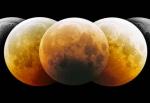 Eclipsed Moon Montage
Eclipsed Moon Montage
22.05.2003
After watching this month's lunar eclipse, amateur astronomer Sebastien Gauthier carefully composed this montage of telescopic images of the Moon sliding through planet Earth's shadow. While the deepest part of the total...
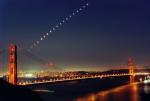 Copper Moon, Golden Gate
Copper Moon, Golden Gate
21.05.2003
When the Moon rose over San Francisco's Golden Gate Bridge on May 15, both bridge and Moon were in already in Earth's shadow. Of course, the bridge is in the Earth's shadow nightly, while the Moon only has that opportunity twice a year, during a lunar eclipse.
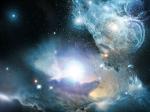 A Primodrial Quasar
A Primodrial Quasar
20.05.2003
What did the first quasars look like? The nearest quasars are now known to be supermassive black holes in the centers of galaxies. Gas and dust that falls toward a quasar glows brightly, sometimes outglowing the entire home galaxy.
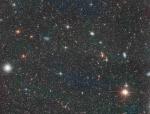 The Andromeda Deep Field
The Andromeda Deep Field
19.05.2003
What can you learn from looking into the depths of space? In an effort to find out true ages of stars in neighboring Andromeda galaxy's halo, astronomers stared into the galaxy giant with the new Advanced Camera for Surveys through the Hubble Space Telescope.
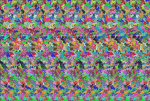 The Holographic Principle
The Holographic Principle
18.05.2003
Is this image worth a thousand words? According to the Holographic Principle, the most information you can get from this image is about 3 x 1065 bits for a normal sized computer monitor.
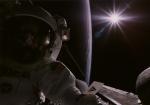 Dark Sky, Bright Sun
Dark Sky, Bright Sun
17.05.2003
In low Earth orbit there is not enough atmosphere to diffuse and scatter sunlight, so shadows are black and the sky is dark - even when the Sun shines. The harsh lighting produced this dramatic...
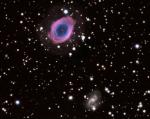 A Tale of Two Nebulae
A Tale of Two Nebulae
16.05.2003
This colorful telescopic view towards the northern constellation Lyra reveals dim outer regions around M57, popularly known as the Ring Nebula. While modern astronomers still refer to M57 as a planetary nebula, at one light-year across M57 is not a planet but the gaseous shroud of a dying sun-like star.
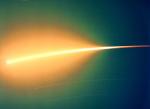 Moon Slide Slim
Moon Slide Slim
15.05.2003
No special filters - or even a telescope - are required to enjoy a leisurely lunar eclipse. In fact, watched from all over the night side of planet Earth, these regular celestial performances have entertained many casual skygazers. Still, this eye-catching picture of a lunar eclipse may look unfamiliar.
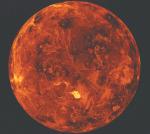 The North Pole of Venus
The North Pole of Venus
14.05.2003
If you could look down on the North Pole of Venus what would you see? The Magellan probe that orbited Venus from 1990 to 1994 was able to peer through the thick Venusian clouds and build up the above image by emitting and re-detecting cloud-penetrating radar.
 Mercury Transits the Sun
Mercury Transits the Sun
13.05.2003
How big is the Sun? The Sun is not only larger than any planet, it is larger than all of the planets put together. The Sun accounts for about 99.9 percent of all the mass in its Solar System.
|
January February March April May June July August September October November December |
|||||||||||||||||||||||||||||||||||||||||||||||||